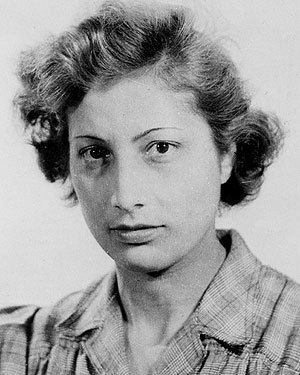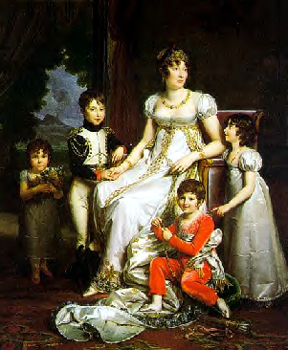
You're lying on a psychiatrist's couch, and there's plenty to talk about. Unshakable bad habits, haunting dreams, wacky family and friends.
You meet a psychiatrist at a party. You can't stand there stripping your psyche naked. What can you talk about? The
DSM-V. That's the latest, due out in May 2013, in a series called the Diagnostic and Statistical Manual of Mental Disorders, published by the American Psychiatric Association. Believe me, after your new friend stops sputtering, you'll have yourself a conversation.
Since 1840, when the U.S. Census asked about "idiocy/insanity," Americans have struggled to identify and categorize what isn't "normal." The DSM and its equivalent, the ICD (
International Statistical
Classification of
Diseases and Related Health Problems), attempt to standardize the classification of mental disorders for clinical, research, and educational purposes by using specific diagnostic criteria. The
DSM-V committees are still laboring under a deluge of help and a hailstorm of criticism––including fierce friendly fire––tinkering with current diagnostic categories, debating issues such as extended grief, working on new diagnoses (including one called "sluggish cognitive tempo"), and vetoing others because they sweep in too many of us or exclude too many of us already diagnosed. They have a Herculean task.
I'll be curious to see the
DSM-V. In the meantime, I enjoy browsing through my husband's
DSM-IV-TR and meeting complex fictional characters who'd be candidates for various mental health diagnoses. Here are a few books I've enjoyed:
Camilla Läckberg must have had the ICD handy when she wrote
The Stonecutter, the third book in her series with cop Patrik Hedström and writer Erica Falck and set in Fjällbacka, Sweden. I've rarely met so many troubled fictional characters outside of a psychiatric setting, such as the one in Oregon described in Ken Kesey's terrific
One Flew over the Cuckoo's Nest. A few possible diagnoses for some of Läckberg's characters include Asperger's disorder, pedophilia, narcissistic personality disorder, antisocial personality disorder, borderline personality disorder, and obsessive-compulsive personality disorder.
The victim is a young girl who has been diagnosed with ADHD (attention-deficit hyperactivity disorder) and DAMP (deficits in attention, motor control and perception––a classification used only in Sweden). A fisherman finds her drowned, tangled in the line of his lobster pot. Patrik goes to the scene. The death of a child is always terrible, but this one is particularly bad for Patrik, father of a new baby daughter with Erica, because he recognizes her as Sara, the daughter of one of Erica's friends. The postmortem discovers bath water, rather than seawater, in Sara's lungs, so a murder investigation begins.
 |
| Photo of Fjällbacka by Frank Heuer |
This thriller is one of those books that jump to a different location and set of characters every few pages. There are two story lines, one of which begins in 1923, that connect near the end. Although I had no difficulty following Läckberg's plot or keeping her characters straight, after 489 pages of constantly leapfrogging about, I felt as if I had artifically-induced ADHD. I wasn't thrilled by how the crime is finally solved, but watching how several monstrous characters are created and how dysfunctional families struggle to cope make this a very interesting read.
One of my favorite fictional psychopaths is Patricia Highsmith's Tom Ripley, who meets
DSM-IV-TR diagnostic criteria for antisocial personality disorder. Ripley is a complex person who takes advantage of others' naïvité and moves from one illegal activity to another. His conscience isn't completely missing; Ripley is capable of some empathy and feeling a degree of remorse, but these traits aren't strong enough to prevent him from defrauding or murdering people. Ripley isn't sadistic; he doesn't take pleasure in killing for killing's sake. The murderous methods Ripley chooses are fairly civilized: a clunk on the head with a bottle, a quick garroting or a gunshot. Despite his crimes, Ripley is strangely likable, and a reader roots for him to succeed.

Highsmith's series involves books of psychological observation that study the subject of guilt. Because Ripley's life changes over the course of the series, the books are best read in order. Begin with
The Talented Mr. Ripley, written in 1955. Ripley goes to Italy at the request of Dickie Greenleaf's rich father to find Dickie and talk him into returning home. One thing happens after another, and before long Dickie is dead, and Tom's life is forever changed. This book was made into a 1999 movie starring Matt Damon as Ripley and Jude Law as Dickie Greenleaf. It's an okay movie, but not as good as Highsmith's book.
In the next book,
Ripley under Ground, Ripley is living with his charming heiress wife Héloïse in Belle Ombre, a chateau near the French village of Villeperce. He has organized a lucrative scheme with some London friends that involves forging Derwatt paintings. All is going well until Thomas Murchison, an American Derwatt collector, decides one of his paintings is a forgery. Ripley pulls out the stops to convince him otherwise.
There are three more Ripley books, and they see him becoming more comfortable with his wife and more concerned about his reputation. Ripley's life is going well in
Ripley's Game until one of his criminal acquaintances, Reeves Minot, asks him to commit a murder for him. Ripley refuses, but he suggests that Minot hire a poor picture framer for the job. This idea doesn't pan out well. In
The Boy Who Followed Ripley, a 16-year-old American boy who has just killed his wealthy father looks up Ripley in France. American David Pritchard arrives in
Ripley under Water. Pritchard is obsessed with the rumors swirling around Ripley's past, and he digs into the disappearance of Thomas Murchison from
Ripley under Ground. These five books form a portrait of a man who doesn't feel the guilt from his actions that he should.
With
Forty Words for Sorrow, Giles Blunt introduces his John Cardinal police procedural series, set in the fictional town of Algonquin Bay in northern Ontario, Canada. Cardinal's wife Catherine has bipolar disorder, and, over the series, Blunt does a great job of describing the effect of this illness on Catherine and her family. In this book, he also presents an unsettling picture of a pair of psychopaths who have none of Ripley's charm.
Like
Forty Words for Sorrow, the second book,
The Delicate Storm, was inspired by a real-life crime. Some of us might remember the crimes perpetrated by the Front de Libération du Québec (FLQ) in October 1970, while Pierre Trudeau was prime minister of Canada.

The ever-escalating tension and dread of the first book is absent in
The Delicate Storm. It is beautifully crafted with vivid characterizations and stunningly described settings you'll never forget. As usual with this series, the cruel winter far north in Ontario is one of the main characters. As the book opens, it is three weeks into January, and the temperature is doing what it never does in January in Algonquin Bay––rising above freezing. The streets are shiny with melted snow, thick fog is sidling up against the buildings in town, and the bears are coming out of hibernation early. They're hungry, and this isn't happy news for Ivan Bergeron, who has a raging hangover. It does his head no good when he hears his dog barking frantically in the woods. By the time Bergeron makes it outside, Shep is back in the yard, whining and clawing at something he has retrieved for his master. The something "lay there, fishbelly white, hair curling along one side. Toward the wrist end, the flesh still bore the zigzag impression of a watch with an expandable bracelet. Even though there was no hand attached, there was no doubt that the thing lying in Ivan Bergeron's backyard was a human arm." While Bergeron is making his grisly discovery, homicide detectives John Cardinal and his French-Canadian colleague, Lise Delorme, are tracking down one of the area's most incompetent criminals, who has just ineptly robbed a bank. These two disparate events lead Cardinal and Delorme into an investigation of crimes that took place 30 years earlier, involving the Mounties and the FLQ.

This book should be read after
Forty Words for Sorrow because what happened in that book is discussed, characters grow and change, and relationships between characters are explored in more depth. Cardinal's relationships with his father, his wife, and Delorme are very well done––this decent man could be someone we know and like. He's far from perfect, but he's not the same troubled/alcoholic cop one often finds in police procedurals these days. The inter-agency squabbles go on a bit long, and at some point I could see where things were heading, but I still enjoyed the getting there. This book does a terrific job of evoking the cultural and political atmosphere of the late 1960s/early 1970s––what the radicals were doing and the government was doing in response.
When
Black Fly Season begins, it's that horrible time of the year when black flies are biting anything that moves. As Blunt says, "The black fly may be less than a quarter inch long, but up close it resembles an attack helicopter, fitted with a sucker at one end and a nasty little hook on the other. Even one of these creatures can be a misery. Caught in a swarm, a person can very rapidly go mad."
A red-haired woman draws attention from the regulars who have taken refuge from the flies to drink in an Algonquin Bay bar. She is beautiful, but covered with black fly bites; she also presents an oddly flat affect and says she doesn't know anything about herself or her present condition. Fortunately, a cop takes her to a hospital emergency room where doctors discover that she has a bullet in her brain.
Cardinal and Delorme begin an inquiry into her shooting that leads them to a mutilated corpse and into a drug dealers' turf war between the Viking Riders motorcycle gang and some small-time criminals led by a charismatic leader named Red Bear. Blunt's readers zig zag between the drug dealers' shenanigans, Cardinal and Delorme's investigation, and "Red" as she regains her memory. While the story unfolds, the cops (and the reader) become more and more anxious to see the perpetrators brought to justice.
The subtitle to
Black Fly Season could be "Life as Hell." Many of Blunt's characters lead lives that can turn nightmarish on a dime: Cardinal must deal not only with his anxiety-provoking investigation, but with his estranged daughter and wife Catherine, who has been in and out of mental hospitals due to her bipolar disorder. It has been two years since her last hospitalization for depression, and she is now preparing to leave on a professional trip to Toronto. Catherine resents Cardinal's worries about her emotional state; when she's joyous or full of energy, he sees mania looming. It's a miracle neither of them has an ulcer. One of Red Bear's men, Kevin, is a failure as a poet but a resounding success as a heroin addict. Red Bear and his partner Leon scare Kevin with their propensity for violence and obsession with bizarre rituals, but he pushes these thoughts aside in favor of more comfortable fantasies about kicking his addiction and being interviewed about his poetry by David Letterman or Martin Amis.

Black Fly Season contains fascinating information (at least to me!) about various fly species and beetles that feast on corpses in various states of decay and how this information is analyzed for forensic evidence. The reasons for the ritualistic murders are interesting, but they are also disturbing. This book contains some very unsettling images of animal and human torture and gore. This is the third Cardinal/Delorme book that I've read, but Delorme is still not well fleshed out. In contrast, Blunt's characterization of the bad guys in this book is dazzling. He is insightful about bipolar disorder and addiction. The setting buzzes, whirs, and hums with insects. Life during black fly season in Algonquin Bay, Ontario, is full of pain for everybody.
By the Time You Read This describes the death of Catherine Cardinal. The book deals with depression, suicide, child sexual abuse, bipolar disorder, and pornography. Blunt handles these difficult subjects with skill, and he is very insightful when his characters deal with grief and feelings of guilt. As usual, his characterization is mostly excellent. In a few lines, Blunt can describe a very minor character so well you'll never forget him. I hope we learn more about Delorme in the next book,
Crime Machine, which I haven't yet read.
For further reading, I suggest the DSM. Reading any of the above books in bed may not aid your sleep, and I offer no guarantee that you'll stay off a psychiatrist's couch. You will, however, meet some characters who should spend some time there.






















































